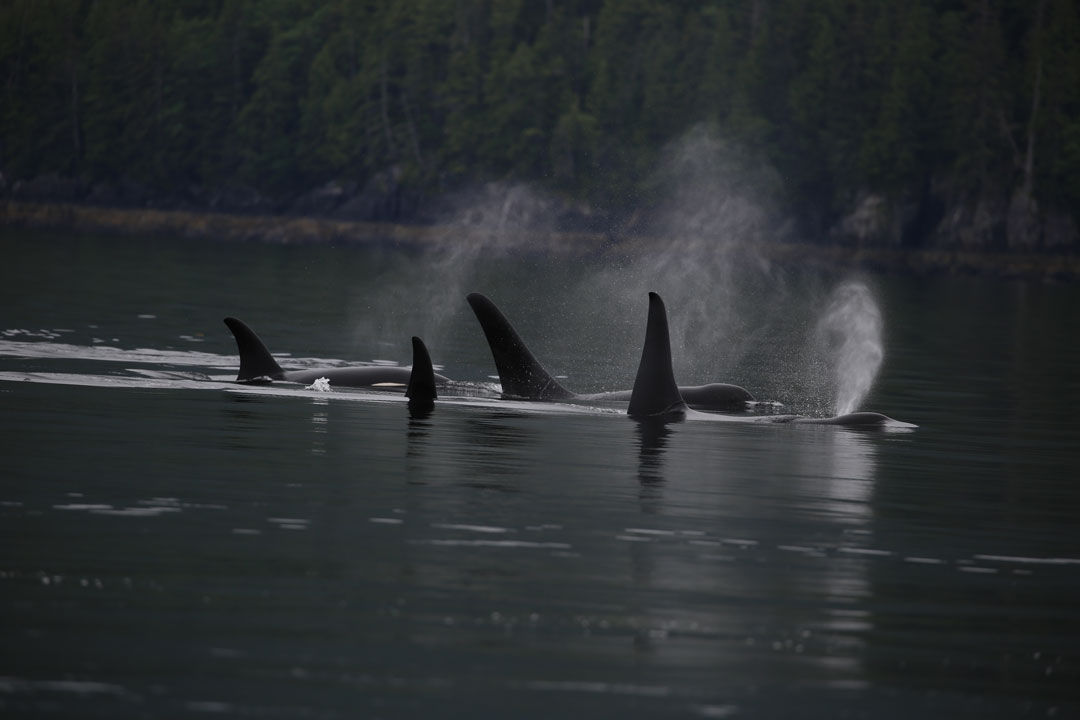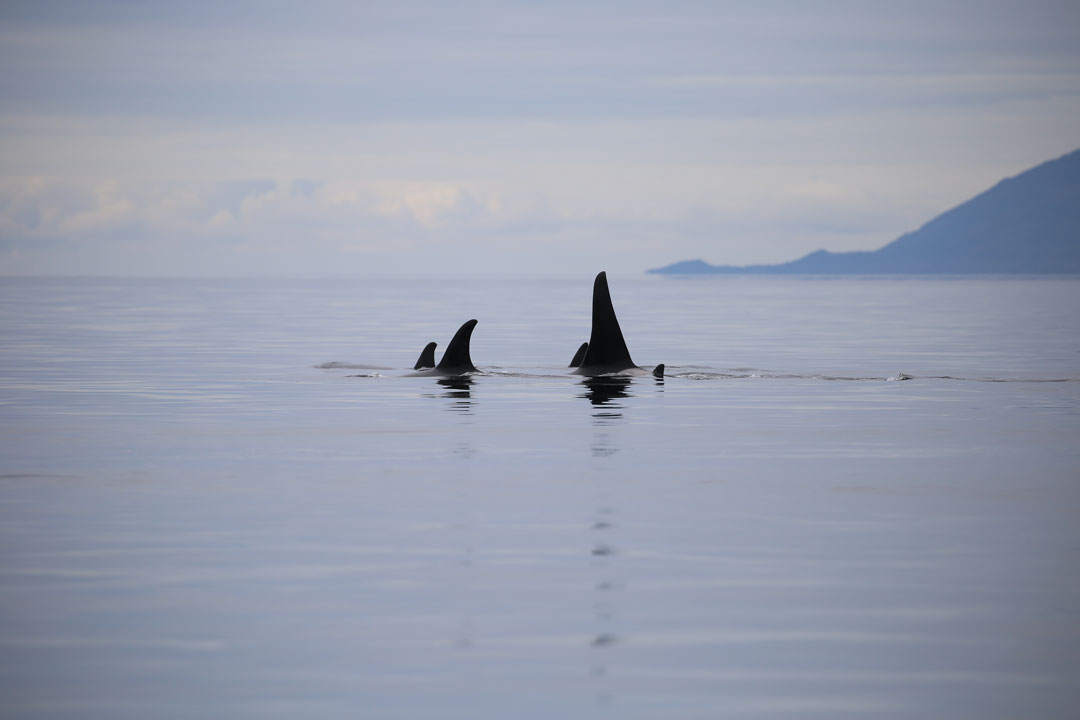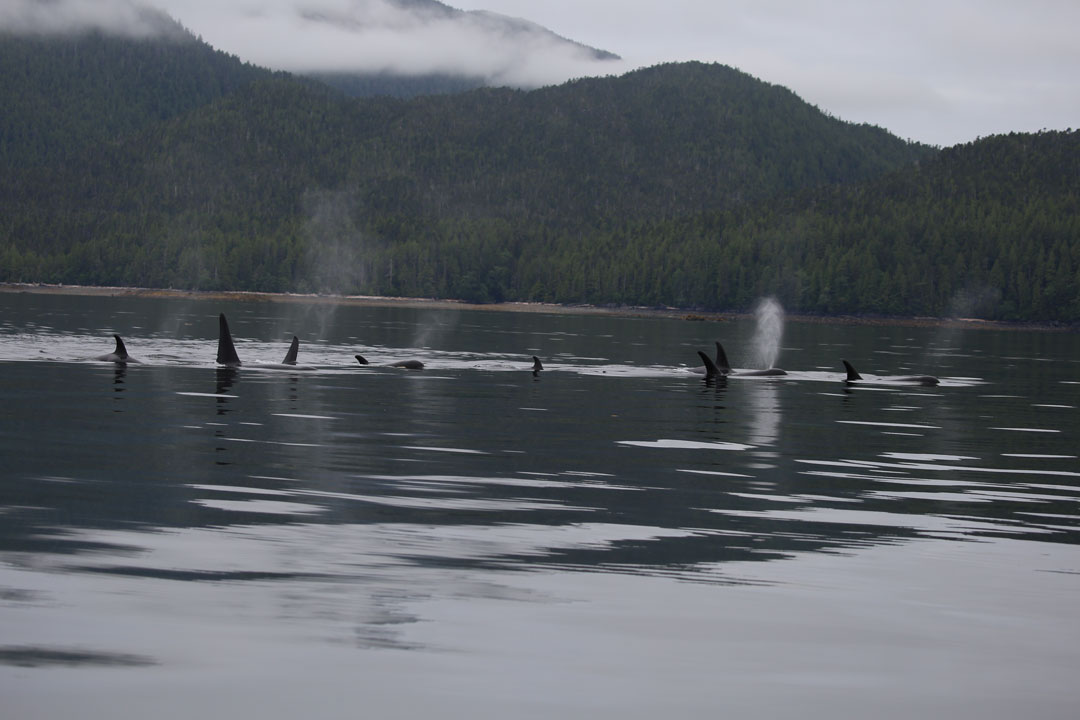Family Ties
To be enthralled with creatures that spend their lives in the water is a curious thing. Imagine swimming as freely and relying on sound, travelling across wide areas to navigate, maintain communication, and find food. It is a way of life so different to what we can relate to, but within these differences, we find that we share a great many similarities. Throughout my time working with BC Whales and within the traditional coastal territories of the Gitga’at Peoples, I have been privileged to (at any time of the day) be acoustically transported through the underwater world and into the depths of Squally Channel to listen to, connect with, and study the dialects and family relations that govern the population structure of the Northern Resident orca community. The acoustic traditions and specialized vocalizations of these fish-eating whales are primarily passed on from mother to child and reinforced by closely related family members, meaning that the more closely related whales are to each other, the more similar they will sound. For us as whale researchers, this means that the vocalizations orca makes within range of our hydrophones not only alerts us to their presence but also lends insight into which specific families might be coming into this habitat.

Photo by Grace Baer | © North Coast Cetacean Society
As the sun set over the backdrop of mountains that line the shores of Tuwartz Inlet, the sky transformed into a dull orange, and night slowly took hold of the Great Bear Rainforest. Just as I tucked into my sleeping bag, distant calls of A-clan orca were picked up by our hydrophone network, indicating the arrival of A-clan resident orca families into Squally Channel. I crawled out of my sleeping bag and sat up into the late hours of the night, recording their calls and tracking their movements, wondering who they were. Eventually, drowsiness took over, and I gave in to sleep, hoping that these whales would stick around the next morning to give us a chance to locate and identify them.

Photo by Grace Baer | © North Coast Cetacean Society
Around 7 am, Charline’s voice brought me out of a dream. She had just started the first land-based systematic scan of the day, surveying all marine mammals and vessel activity. It is Charline’s first time along the coast of BC as she joined us as a research assistant, and not long after her scan started, she spotted the group of orcas whose calls had filled the research station all night. After gathering all of our data collection supplies, cameras, and drone equipment, we left Fin Island behind and headed towards the Cherry Islets – the group’s last known location. Travelling over glassy waters along the Pitt Island shoreline, anticipation was building in my chest until, from a distance, I saw unmistakable sleek black dorsal fins pierce the water’s surface. As we slowly approached, I couldn’t help but continue to wonder who would be in the group. The ability to distinguish individual whales and get to know each of their personalities is what initially captivated me and inspired my dream to be able to study whales in the wild.
It very quickly became clear that there was more than one family present as we watched more than 20 orcas surfacing together. While some of the older members of the A34s, A35s, and A64s formed a resting line, the younger members of these families joined up and took advantage of the opportunity to socialize at the surface together. Spy-hopping, breaching, tail slapping, and porpoising in circles around the larger group of resting adults. On the water, we are often hyper-focused on our data collection goals which are aimed to ultimately protect the areas that these whales depend on for their survival, but in moments like these, we could not help but to join in the joy and laughter at the rambunctious nature of these young whales.

Photo by Grace Baer | © North Coast Cetacean Society
Time passed, and though this large multi-family group remained in close proximity, they divided clearly into matrilines, with the eldest females and their offspring travelling closer to each other than to the more distantly related individuals of other matrilines. Experiencing and documenting the exact family ties and social dynamics that have maintained the stability of this population’s social structure is awe-inspiring and humbling. After arriving back at our research station on Fin Island, I acoustically transported them once again to this group as they continued to vocalize, feed, and swim freely in the productive habitat in Squally Channel into the dark hours of the night.
